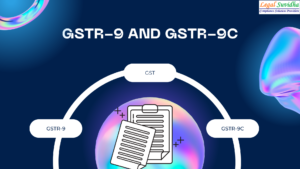CRYPTOCURRENCY AND ITS TAXATION
HISTORY:
Bitcoin has been one of the first cryptocurrencies which entered the market in the year 2009, and it was invented by Satoshi Nakamoto. After that, several Cryptocurrencies came into the market, and some of the popular currencies are Bitcoin Cash, Ripple (XRP), Litecoin, etc. As per an estimate, thousands of cryptocurrencies exist as of the year 2022
What are Virtual Digital Assets?
Section 2(47A) “virtual digital asset” means
- any information or code or number or token (not being Indian currency or foreign currency), generated through cryptographic means or otherwise, by whatever name called, providing a digital representation of value exchanged with or without consideration, with the promise or representation of having inherent value, or functions as a store of value or a unit of account including its use in any financial transaction or investment, but not limited to investment scheme; and can be transferred, stored or traded electronically;
- a non-fungible token or any other token of similar nature, by whatever name called;
- any other digital asset, as the Central Government may, by notification in the Official Gazette specify: Provided that the Central Government may, by notification in the Official Gazette, exclude any digital asset from the definition of the virtual digital asset subject to such conditions as may be specified therein.
Hon’ble Union Finance Minister Smt. Nirmala Sitharaman announced while reading out the proposals of Union Budget 2022-23 in the Parliament that the government proposes to tax the gains made on ‘Virtual Digital Assets’ at the rate of 30 percent of the net gain so made plus the cess and a surcharge for a threshold amount. She also further proposed that inter-person transactions made on such assets shall be subjected to TDS (Tax Deducted at Source) at the rate of 1 percent above the threshold limit which would be announced by the government. It was also announced that the loss from Virtual Digital Assets cannot be set off against any other income, which means if an assessee has a loss from a particular virtual digital asset, the assessee cannot set it off against any other gain from any other income. Further, the individual will not be able to carry forward the losses from virtual digital assets to subsequent financial years.
The Government of India defined the term ‘Virtual Digital Asset’ as “any information or code or number or token (not being Indian currency or any foreign currency), generated through cryptographic means or otherwise.” It also includes Non-Fungible Tokens and “any other digital asset, as the Central Government may, by notification in the Official Gazette specify:” Therefore, bringing the cryptocurrencies within the meaning of virtual digital assets and making it taxable at the rate of 30 percent plus cess and surcharge and TDS at rate of 1 percent for inter-person transactions.
The Finance Bill 2022 also proposed a 1 percent TDS on payments towards virtual currencies beyond Rs 10,000 in a year and taxation of such gifts in the hands of the recipient. The threshold limit for TDS would be Rs 50,000 a year for specified persons, which include individuals and Hindu Undivided Families (HUF) who are required to get their accounts audited under the Income Tax Act.
Why Government levy Income Tax on VDAs?
VDAs Tax as per Income-tax Act, 1961, has come into force from April 1, 2022 Section 115BBH except for provisions for tax withholding, which came into force from July 1, 2022 Section 194S. The amendments are aimed at discouraging entering into transactions including investment into virtual digital assets, it is widely believed. India can, possibly, be the first country to take such strict statutory measures to discourage transactions in virtual digital assets. The other world shall be keenly observing the execution of these provisions
Virtual Digital Assets Taxation under section 115BBH:
- Gain on VDAs is taxed at 30%.
- No deduction is allowed other than the cost of acquisition.
- No set off allowed to any other income.
- No set off allowed to any other VDAs.
- For Example, Bitcoin Profit and XPR Loss cannot be set off.
- Loss of VDAs shall not be allowed to be carried forward to succeeding assessment years.
Tax on transfer of virtual digital assets shall be charged irrespective of
(a) income is below the threshold limit or
(b) the assessee has sustained a loss
When virtual digital assets received as gifts are Taxable
As per Section 56(2)(x), of the income tax act, when any person receives any benefit, whose value exceeds Rs. 50,000 the same shall be taxable at prescribed rates. This shall also include deemed income, where deemed income includes but not restricted to Receiving specified movable properties without consideration or for inadequate consideration The deemed income under this provision can arise from the following transactions:
(a) Where any property (includes VDAs) is received without consideration and the aggregate fair market value of which exceeds Rs. 50,000, the whole of the aggregate fair market value of such property will be chargeable to tax.
(b) Where any property is received for a consideration that is less than the aggregate fair market value of the property by an amount exceeding Rs. 50,000, the difference between fair market value and consideration is chargeable to tax. In both situations, the limit of Rs. 50,000 shall be checked for every transaction and not in aggregate of all transactions. The Finance Bill, 2022 proposes to include virtual digital assets within the scope of movable assets. Thus, if a person receives a virtual digital asset without consideration (gift) or for inadequate consideration and the value of the such benefit exceeds Rs. 50,000, it shall be taxable in the hands of the recipient under Section 56(2)(x) as income from other sources.







